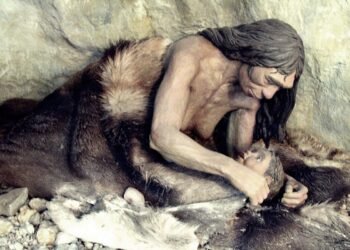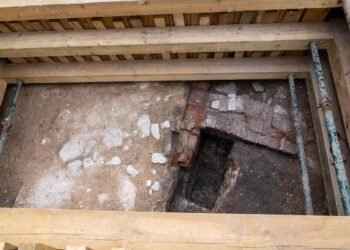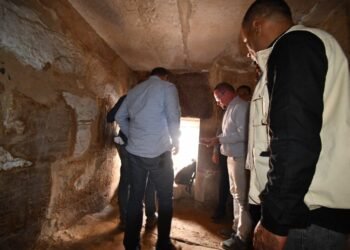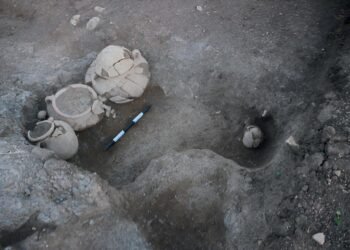Archaeologists in Puisserguier, southern France, have uncovered a rare Late Neolithic burial that challenges conventional interpretations of funerary practices. The discovery, made in 2017 during routine evaluations, revealed the skeleton of a woman in a former storage pit measuring 2.9 meters in diameter. Radiocarbon dating places the burial in the Chalcolithic period (circa 2700–2600 BCE), aligning it with the Verazien culture prevalent in the Languedoc-Roussillon and Catalonia regions.
The remains were found supine, with the woman’s limbs flexed slightly to the left and her arms positioned across her chest. However, what sets this burial apart is the meticulous placement of the woman’s severed head on her chest, supported by her right hand. Researchers determined the skeleton’s sex through pelvic morphology, later confirmed via paleogenetic testing.
The precise arrangement of the skull and the intact connections between the skull, mandible, and right hand strongly suggest deliberate action. According to the researchers, this positioning could not result from natural decomposition or accidental postmortem bone displacement. The burial’s completeness and the absence of significant disarticulation further support the hypothesis of intentional decapitation at or shortly after the time of death.
While deliberate head removal has been documented at other European Neolithic sites, such practices often involve later-stage dismemberment or skull removal for secondary use, such as display or veneration. The researchers wrote in their paper published in Antiquity: “The Puisserguier burial is distinct in that the head was intentionally placed in contact with the postcranial skeleton. This contrasts with other documented cases, where decapitation or dismemberment is followed by less deliberate arrangements.”
This burial has no known parallels in southern France. While similar practices in Europe are sometimes linked to violent rituals or symbolic acts of exclusion, the Puisserguier burial appears to defy such interpretations. The careful positioning of the body and the evident respect afforded to the deceased suggest a ritualistic or symbolic significance, rather than marginalization or dishonor.
The researchers also considered alternative hypotheses, such as desiccation processes akin to mummification, but deemed these unlikely given the site’s climatic and cultural context. They concluded that the burial was primary, meaning the woman’s remains were not disturbed or altered after initial interment.
The exact motivations behind this unique funerary treatment remain unclear. Was the decapitation part of a specialized ritual exclusive to this community? Could it represent an undocumented but significant cultural practice of the Verazien culture? The absence of similar burials in the region complicates efforts to contextualize the find within broader Neolithic traditions.
Further research and comparisons with other burials from the period may help uncover the cultural and symbolic significance of this unique funerary practice.






















